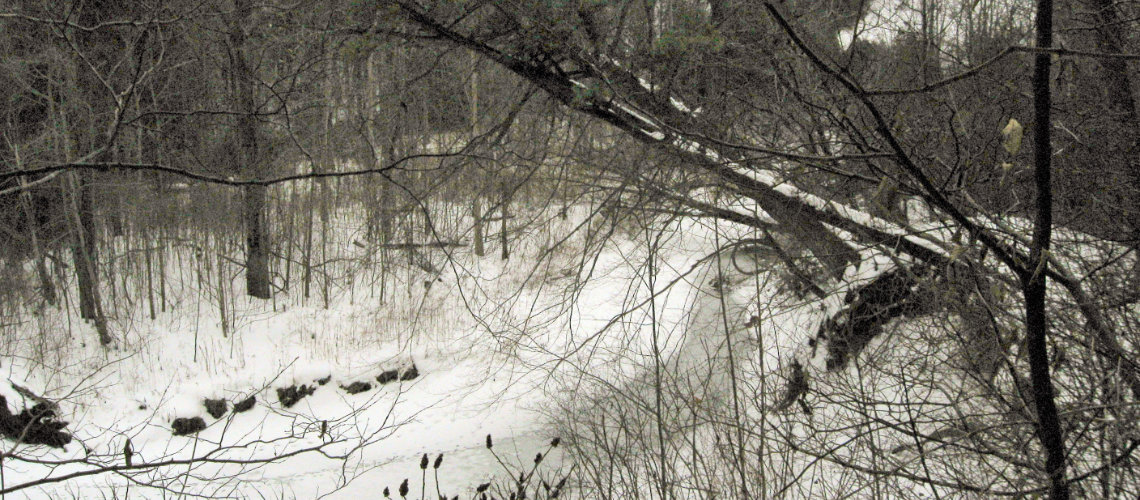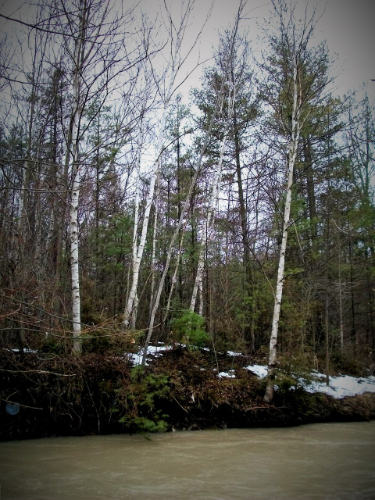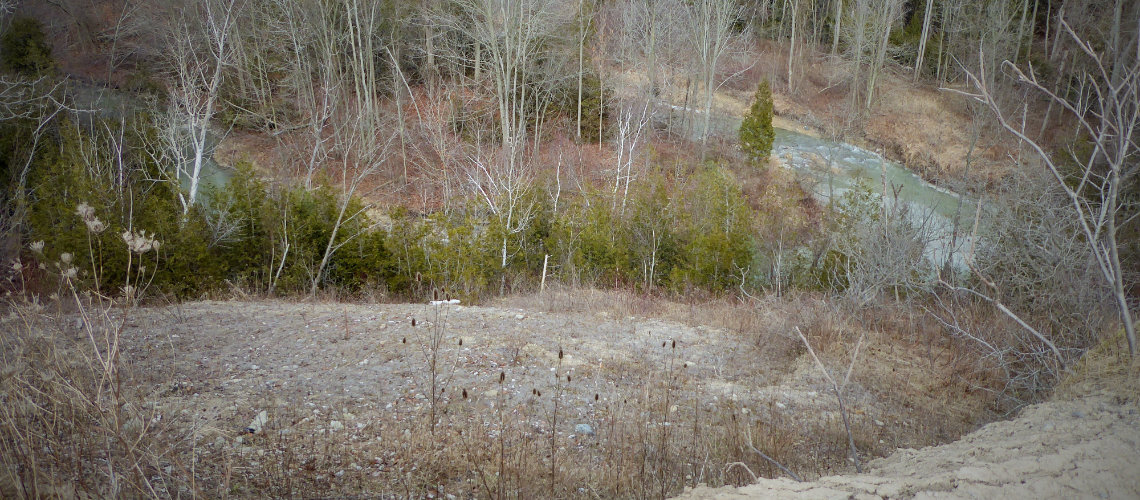In the fall of 2015, Mary and I considered, with much forethought, what we were to do with our picturesque, mainly forested 40-acre property on the banks of Hickory Creek, near the shore of Lake Huron in Lambton County. The property had hosted our 690-apple tree orchard for several decades, which we converted to a meadow in 2006 save for small vegetable and flower garden. With respect to the forest and its ravine, except for some minor trails, it had not been perturbed for many decades. Having allowed the forest to regenerate naturally over the last four decades is a testament to our commitment to habitat stewardship on our property.

Winter in the Ravine - Walter Petryschuk
In recent years, a large number of ash trees on the property have succumbed to damage from the invasive Emerald Ash Borer insect. Upon learning of the Carolinian Canada Coalition group, the organization was approached with a view of enhancing the health and diversity of the whole ecosystem – increasing plant species richness, addressing erosion issues, and creating new habitat to attract more insects and birds. As members of the Coalition, this connection led to working with Karolyne Pickett who provided the leadership to generate the Carolinian Habitat Action Plan (CHAP), which captures the scope for future on-the-ground initiatives to be undertaken on the property. This extensive and guiding document essentially assessed, in a professional manner, the long-term requirements that Mary and I were seeking.
In the fall of 2017, we proceeded to accelerate the enhancement and regeneration of the forest and address creek bank erosion by planting 500 trees and shrubs, particularly along the edge of the creek, on the ravine slope and at the top of the ravine. This was financed from a grant received from the Great Lakes Guardian Community Fund, the application to which was facilitated by the Carolinian Canada Coalition (CCC). In addition, CCC was able to support the seeding of a tall grass prairie, planted in the spring of 2018, where the apple orchard once stood.

Birch Stand and Creek - Walter Petryschuk
During the past decade, dozens of bird houses of varying sizes, shapes and unique design had been established within the forest. This effort had already paid dividends by attracting a more diverse population of birds. The most recent sighting was that of a male and female wood duck which had never been seen previously on the property. This result came from the specifics of the guidelines in the CHAP where wood duck and bat houses were suggested, and which were subsequently constructed and erected in the ravine adjacent to the Hickory Creek channel.
It is our plan to conserve the Carolinian nature of the property for the benefit of our descendants. Our next project is to secure funds in order to implement recommendations made by the St. Clair Region Conservation Authority, concerning erosion on the ravine slope stemming from a tile drain outlet. The CHAP is our guideline and will provide the appropriate incentive and annual goals to continue on this road to strengthening the character of this wild Carolinian ecosystem.
Respectfully,
Mary and Walter F. Petryschuk

Tree and Shrub Plantings - Walter Petryschuk
